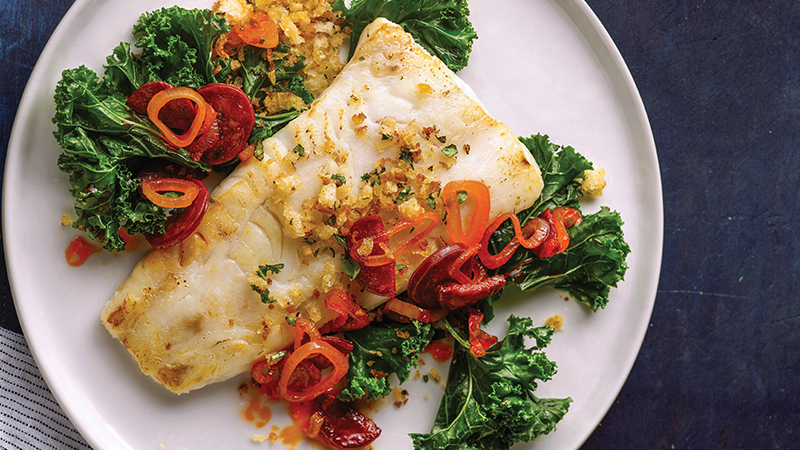January 13, 2020
What Can We Learn About Wild Alaska Pollock Processing in China?

Craig Morris, CEO of Genuine Alaska Pollock Producers, and Margery Schelling, Executive Vice President of Global Marketing, Strategy and Innovation at American Seafoods, reflect on their impressions and key takeaways from the tour of the Beiyang Jiamei in Qingdao, China in January.
Q: You spent time today touring the processing facilities for one of the largest seafood importers in China. What were your observations of the plant and what can we learn?
Margery: I walked in and I immediately noticed the great attention that was paid to food safety, hygiene and cleanliness. From donning our smocks, hairnets and walking through multiple sanitization stations before even entering the plant to the high level of supervision and quality control in the lines it was clear that the company has set a standard and works hard to exceed all expectations. I also was impressed by how hard they are working to meet consumers where they are—looking at multiple product formulations, huge variety of fish, and even new packaging that is more sustainable and reduces plastic usage.
Craig: For me it was the attention to detail and precision that impressed me the most. The way each fish was hand-fileted and the pride that the employees took in their work to maximize the yield on each fish was absolutely incredible. The skill of that workforce and the training that the company must do to ensure that each product meets exact specifications is truly astounding.
Q: There was a lot of discussion over lunch about how to introduce Wild Alaska Pollock to more Chinese consumers. How do you think we best do that as an industry?
Margery: We have to make Wild Alaska Pollock relevant in traditional Chinese dishes. You look around the table at lunch today and there’s a variety of seafood being served in multiple preparations that I think would work well for Wild Alaska Pollock. We have to make our fish available to those preparations. Take traditional Chinese Hot Pot for example-that’s hugely popular in China and its popularity is only increasing. How can we make Wild Alaska Pollock for Hot Pot restaurants and market it for use there? Those are the questions we have to be asking.
Craig: I couldn’t agree more. It’s clear that the Chinese consumer is not familiar with the battered and breaded preparations and if they’re going to eat that anywhere, it’s maybe while dining out at a popular QSR restaurant. The home cook does not look at a fried product as “healthy,” and thus aren’t inclined to purchase products presented that way at retail. We have to be looking at how we can present our fish in a way that captures the home-cook in familiar ways.

